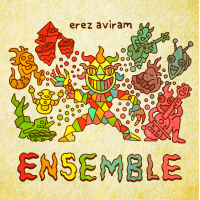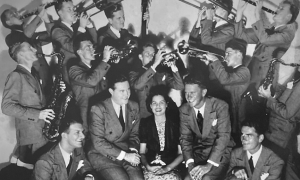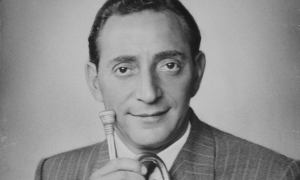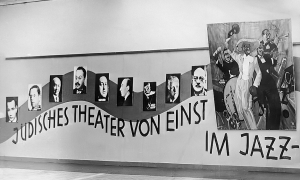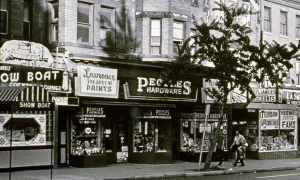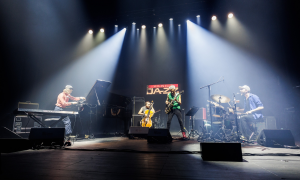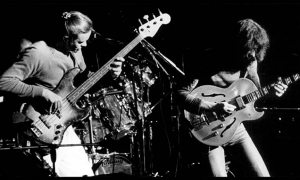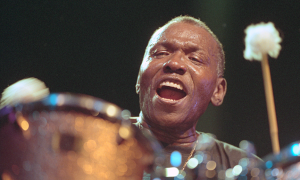Home » Jazz Articles » History of Jazz » The Roma: The Roots of Flamenco, Gypsy Jazz, and Miles D...
The Roma: The Roots of Flamenco, Gypsy Jazz, and Miles Davis' "Sketches of Spain"

 In 1959, a magical year for jazz albums, Miles Davis, inspired by some flamenco performances he had heard, recorded Sketches of Spain (Columbia, 1960) at Columbia's 30th Street studio. Half of the album is a beautiful orchestral interpretation of the classical guitar piece "Concierto de Aranjuez," written twenty years before the Davis recording, by Joaquin Rodrigo, which is about the gardens in the royal palace at Aranjuez. Davis was drawn to strong melodies, and the melodies here are certainly powerful, but the opening castanet sounds do not make it flamenco, and "sketches" in the title make it clear that that was never his intention. Also on the recording is a track written by Manuel de Falla titled "Will-o'-The-Wisp" from his 1915 ballet "El Amor Brujo" ("Enchanted Love"). The track titled "The Pan Piper" is from a tune played by a knife sharpener when he is "pregonando," which means that he is announcing his arrival to his customers in the villages. "Saeta" is a processional song associated with carrying statues of the Virgin during Easter week. The only flamenco in the list of tracks is "Solea." Roma Flamenco music was used as a marketing tool by General Franco's ministers after Franco became head of the Fascist government in Spain following a terrible civil war.
In 1959, a magical year for jazz albums, Miles Davis, inspired by some flamenco performances he had heard, recorded Sketches of Spain (Columbia, 1960) at Columbia's 30th Street studio. Half of the album is a beautiful orchestral interpretation of the classical guitar piece "Concierto de Aranjuez," written twenty years before the Davis recording, by Joaquin Rodrigo, which is about the gardens in the royal palace at Aranjuez. Davis was drawn to strong melodies, and the melodies here are certainly powerful, but the opening castanet sounds do not make it flamenco, and "sketches" in the title make it clear that that was never his intention. Also on the recording is a track written by Manuel de Falla titled "Will-o'-The-Wisp" from his 1915 ballet "El Amor Brujo" ("Enchanted Love"). The track titled "The Pan Piper" is from a tune played by a knife sharpener when he is "pregonando," which means that he is announcing his arrival to his customers in the villages. "Saeta" is a processional song associated with carrying statues of the Virgin during Easter week. The only flamenco in the list of tracks is "Solea." Roma Flamenco music was used as a marketing tool by General Franco's ministers after Franco became head of the Fascist government in Spain following a terrible civil war. Flamenco was used as a musical means to encourage tourists to visit the impoverished coasts of Spain in the late 1950s. The advent of jet travel and package tours was illuminated by bright and exciting Roma Flamenco dance shows, with the ladies dressed in bright polka dot flared outfits and the men in tailored, high-waisted trousers. They became the pin-up poster stars of Spanish tourism.
The Roma people, who were nomadic entertainers and metal workers, had left their camps in the Punjab and Rajasthan, India, in the 8th century to escape invading Muslim armies who occupied what is now the Sindh province of Pakistan. When they arrived in Europe, the Roma were called "gypsy" as they were wrongly assumed to be from Egypt.
The Roma nomadic lifestyle has always left them open to prejudice. In the most extreme cases they were enslaved in Romania for over five hundred years and the Germanic Sinti Roma were targeted for Nazi extermination during World War II. Half a million Roma people were killed in what they call "The Devouring."
Musically, the Roma often use drones and the Phrygian mode, both of which are associated with Eastern music. They perform on portable instruments, which fits their nomadic lifestyle. In Spain, they clap and counter clap hands, stamp their feet, or tap metal hand cymbals and wooden castanets. Linguistically, they speak a form of the Indian classical language Sanskrit, to which their constant travels have added European words from various languages. Finally, DNA tracing has established their Indian provenance.
After the 15th century "Reconquista" by Ferdinand of Aragon and Isabella of Andalucia, which ousted Moorish North Africans from all of Spain, the Roma brought their singing, dancing, and music to Seville and Cadiz, all of which related directly to the Indian musical styles of their ancestors. The "floreo" hand movements depict opening flowers, the "brazeo" depicts the twisting arm movements, which extends and enhances the "vuelta," the statement made by the turning of the body. The dancer's feet tap out the rhythm —"zapateado"—and communicate time—"marcaje"—to the musicians. When crescendo "subida" is called, it is the dancer who increases the tapping speed for the musicians to follow. All this fire and energy is directed to one end, the creation of "duende," a trance-like physical state of oneness with the music for performers and audience alike. At the end of each solo, the dancer strikes a pose with one hand high up in the air and looks at the audience, almost with disdain. This defiant stance represents a disregard for the many difficulties the Roma have overcome through their long history. In song, voices of both men and women are forced to discordant extremes, to express sadness and emotion following a lamentful style of which began in India as a dirge.
American jazz drove Roma musicians to formulate Manouche jazz in France prior to World War II, which sparked an amalgamation of the two styles—jazz and traditional Roma music—which was led by guitarist Django Reinhardt and violinist Stephane Grappelli. Both played and wrote music which was centered in Paris and has come to be closely associated with that city. Sketches of Spain was to be a continuing inspiration for Chick Corea, who performed with flamenco dancers and his Spanish Heart Band to the end of his career, as recently as 2019 in France at Jazz in Marciac.
The Roma people were displaced by Islamic armies in 711 AD; since then these downtrodden people have been persecuted, mistreated, and wrongly named. However, they gave musical inspiration to jazz in the 20th century and received inspiration from jazz in return. That reciprocal relationship is an enduring monument to the worldwide and historical power of the music.
Tags
History of Jazz
Martin McFie
United States
South Carolina
Hilton Head Island
Miles Davis
New York City
Django Reinhardt
Stephane Grappelli
Paris
Chick Corea
Sketches Of Spain
Gil Evans
PREVIOUS / NEXT
Support All About Jazz
 All About Jazz has been a pillar of jazz since 1995, championing it as an art form and, more importantly, supporting the musicians who make it. Our enduring commitment has made "AAJ" one of the most culturally important websites of its kind, read by hundreds of thousands of fans, musicians and industry figures every month.
All About Jazz has been a pillar of jazz since 1995, championing it as an art form and, more importantly, supporting the musicians who make it. Our enduring commitment has made "AAJ" one of the most culturally important websites of its kind, read by hundreds of thousands of fans, musicians and industry figures every month.













